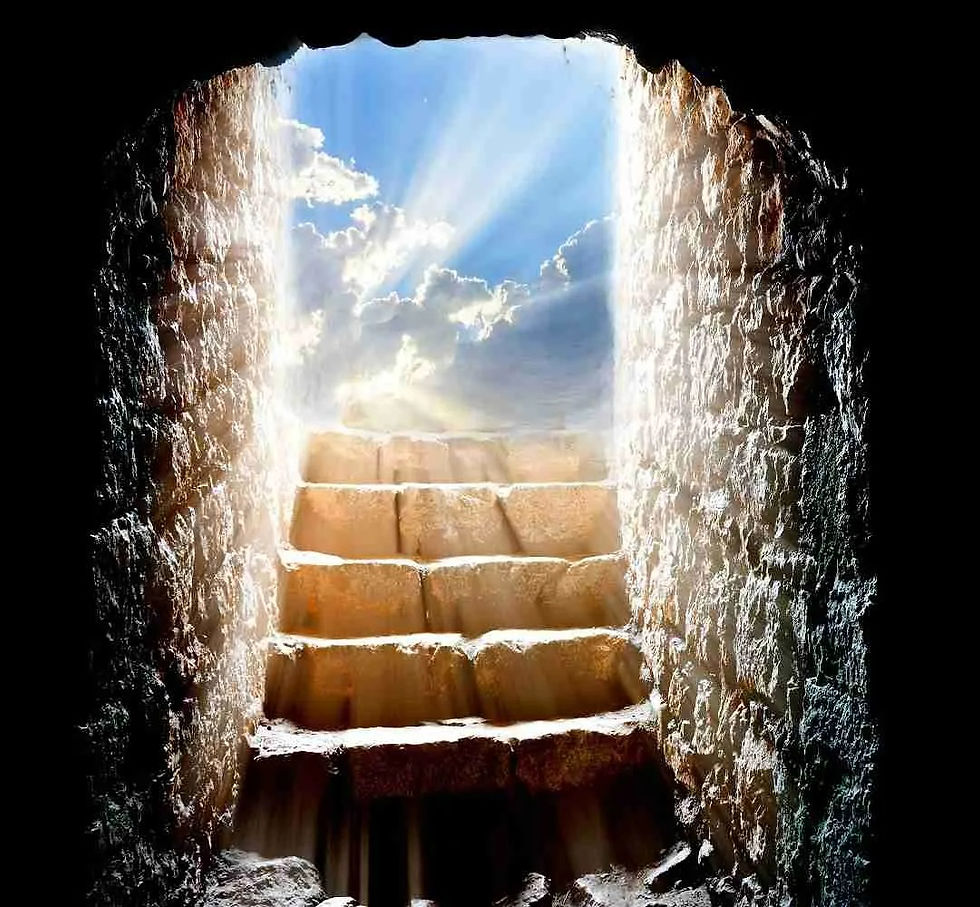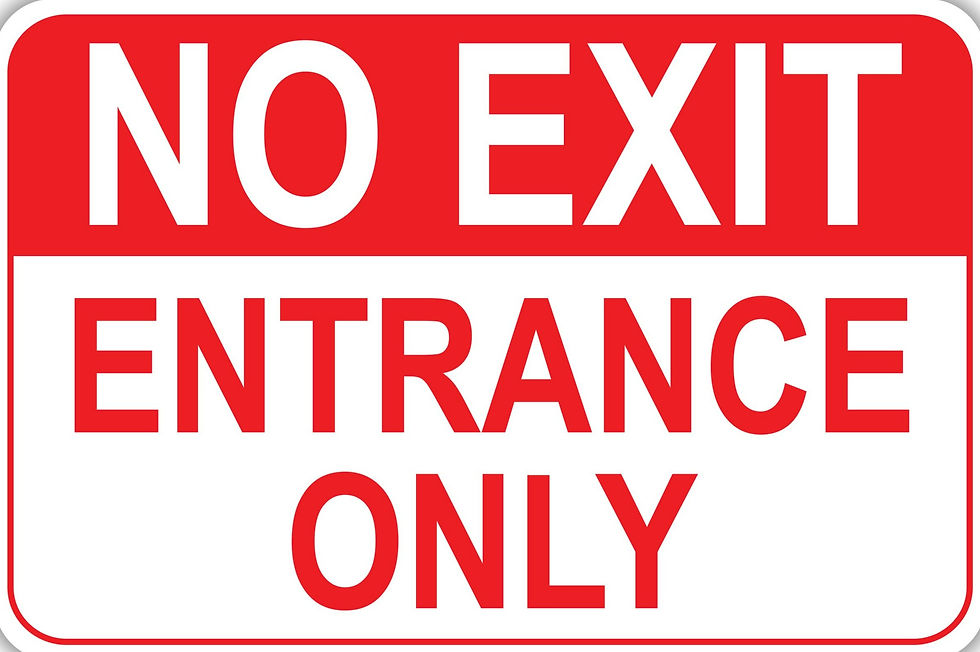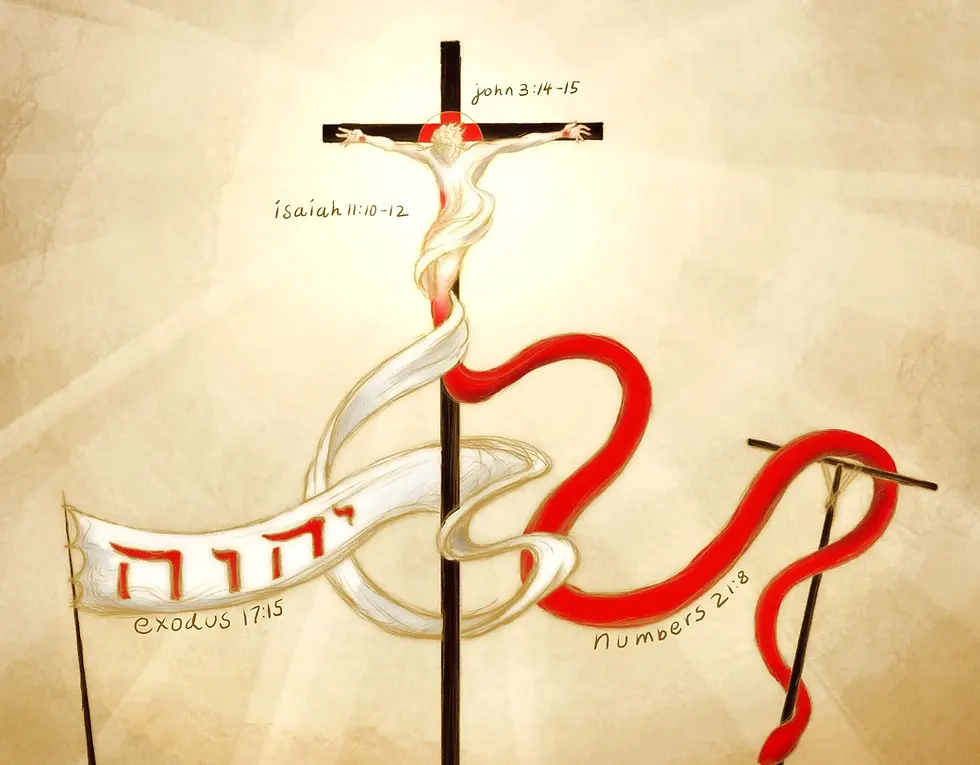A TOMB’S EASTER WITNESS
- Charles
- 8 avr. 2023
- 4 min de lecture
Reflections for Easter Sunday: Acts 10:34a, 37-43, Col 3:1-4, and Jn 20:1-9
“The other disciple also went in and he saw and believed” (John 20:8). What did this disciple (presumably John) see that would convince him to believe? He saw an empty tomb! “As a matter of historical reconstruction, the weight of evidence points firmly to the conclusion that Jesus’ tomb was found empty and that its emptiness was a factor in the first Christians’ belief in the resurrection of Jesus”, wrote British New Testament Scholar James Dunn in The Evidence of Jesus (1985, p.68). How could an empty tomb possibly become proof and witness of history’s single most important event? Let us gaze into the tomb this Easter Sunday and listen to its witness.

1. Tomb becomes a sign: Tombs, in Jewish culture and religion, were considered impure and defiling. Leviticus prescribes that “anyone who touches a tomb or a grave unintentionally is ritually unclean for seven days” (Leviticus 19:16). It was therefore customary to whitewash the tombs in Jerusalem before Passover so that no one would touch them accidentally and thus become ceremonially unclean. So, when Jesus called the Pharisees and Sadducees white-washed tombs (Matthew 23:27), he was applying the paradox of the tombs to their hypocrisy: whitewashed and pretty to look at from the outside but dead and defiling from within.
On Easter Sunday, however, the tomb is transformed into the venue of Jesus’ resurrection. What was considered polluting now becomes the locus of our salvation. The defiling tomb witnesses the birth of a new opportunity for all creation to share in the divine life. To this day, therefore, the Church prays during the funeral service at the cemetery, “Lord Jesus Christ, by spending three days in the tomb, you sanctified the graves of all who believe in you and so made the grave a sign of hope that promises resurrection even as it claims our mortal bodies”. The light of Easter transformed the ‘defiling’ and the ‘unclean’ tomb into a sign of hope, a promise of our resurrection.
2. Tomb becomes a womb: Riddle me this- what is that one place you cannot leave once you enter? And what is that one place you cannot enter once you leave? The law of nature teaches us that we can never enter our mother’s wombs and we can never leave our tombs once we are laid to rest in them. The life of Jesus alters our traditional understanding of wombs and tombs. The birth of Jesus through a virgin’s womb is God’s entry into a door marked NO ENTRANCE! The resurrection of Jesus in an empty tomb is God’s exit through a door marked NO EXIT! Jesus resurrects and exits the tomb to prove that there is life is more resilient and powerful than death. And so Paul exclaims, “Where, O death, is your victory? Where, O death, is your sting?” (1 Corinthians 15:55).

Easter is an invitation to experience the transformation of our tombs into wombs of new life. French Theologian Pierre Teilhard de Chardin insists, “We are not human beings having a spiritual experience. We are spiritual beings having a human experience”. We don’t have to wait for our death to become transformed into spiritual beings. The grace of resurrection is made available here and now to help us realise that we share in the life of God. So, what does it mean to become resurrected people while we are still on earth? Paul gives us a two-point response in the second reading: 1. Make God the purpose of your life (Since, then, you have been raised with Christ, set your hearts on things above) and 2. Make God the biggest priority of your life (For you died, and your life is now hidden with Christ in God).
3. Tomb becomes a door: At the end of the Good Friday evening, Jesus was laid in the tomb, a large stone was placed at the entrance and two Roman soldiers were placed to guard the grave that was sealed shut. To the disciples, it seemed like darkness has defeated light. It looked as if evil had won over goodness and human pride had conquered God. The women who came to the Tomb worried about the same thing: “who will roll back the stone for us from the entrance to the tomb? For the stone was very big.” (Mark 16:3). On Easter day, however, “When they looked up, they saw that the stone had been rolled back” (Mark 16:4). The closed tomb is now open!

Easter teaches us that no matter the darkness of our nights, closed doors will ultimately give way to God’s redemptive power. Easter is not the guarantee of a quick-fix magical solution to all our problems but a guarantee that God accompanies us on our path to discovering new doors, new openings, and new possibilities. St. Augustine rightly said, “Do not abandon yourselves to despair. We are the Easter people and hallelujah is our song.” This Easter, let us see and believe in the tomb’s convincing witness to the message of Easter: we have a path to holiness, life, and a new beginning. Happy Easter!




Commentaires